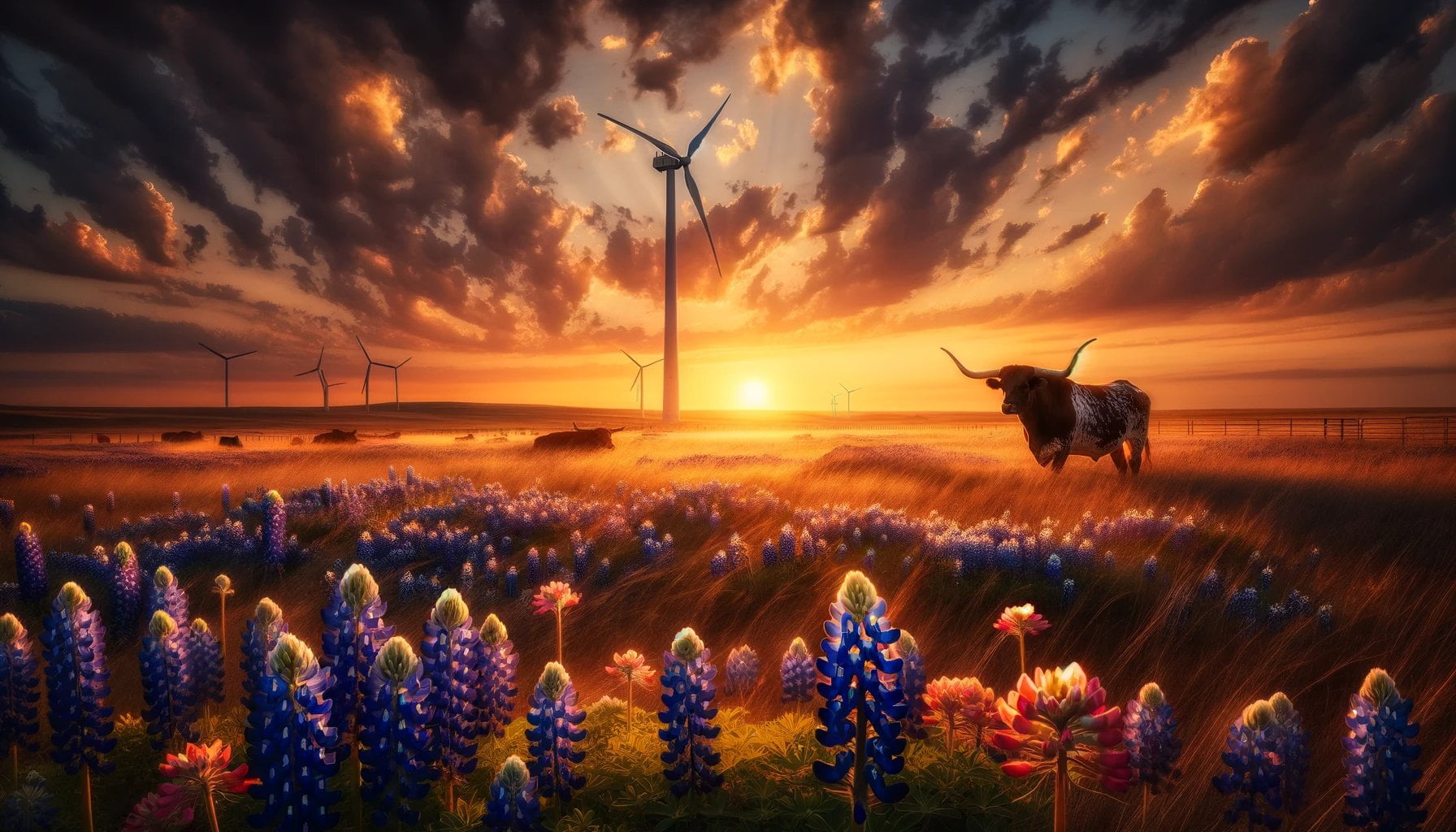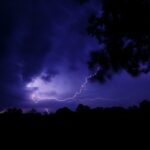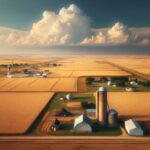Get ready to dive into a world of fascinating fun facts as we embark on an exploration of the North Central Plains of Texas. This extraordinary landscape is bursting with unique features, vibrant wildlife, and a rich historical significance that will leave you in awe. From the hidden gems tucked away in its vast expanse to the captivating stories of its past, join us as we uncover the wonders of the North Central Plains of Texas.
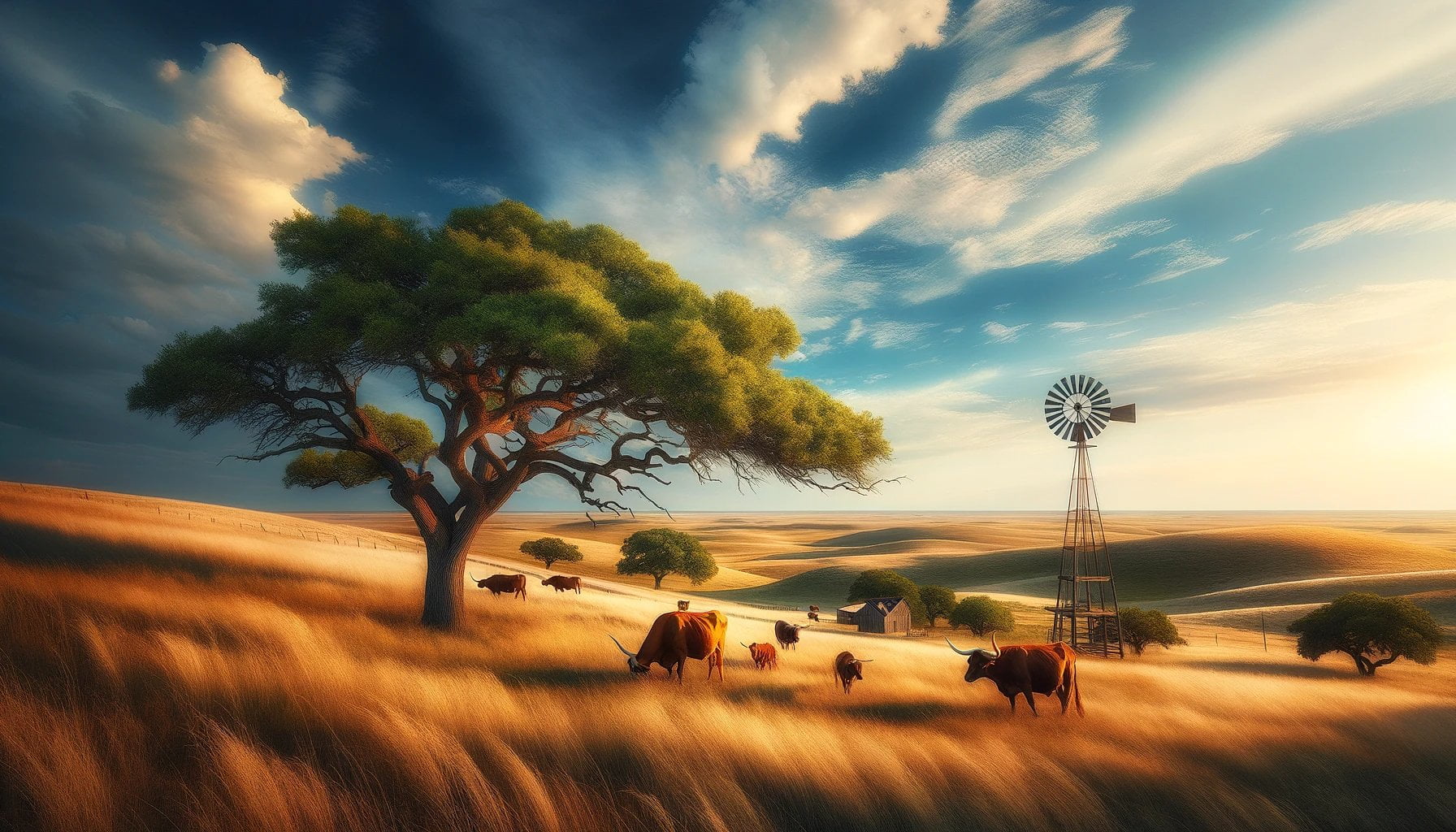
Key Takeaways:
- The North Central Plains of Texas receives an average of 30 inches of rainfall each year.
- The region experiences hot summers and chilly winters with temperatures ranging from 92°F (33°C) in summers to 30°F (-1°C) in winters.
- Tornadoes and hailstorms are common in the North Central Plains.
- In 1979, Wichita Falls, a city in the North Central Plains, was hit by the worst tornado ever recorded in Texas.
- During the 1850s and 1860s, over 100 camels were released in the plains of Texas for use in wars against Indians.
- The released camels could still be seen in the hills of the North Central Plains well into the 1920s.
- The North Central Plains is characterized by wide-open expanses of land, including canyons, farmland, lakes, and rivers.
- The region is home to various native animals, although specific examples are not mentioned in the context.
Fun Facts About the North Central Plains of Texas
When it comes to the North Central Plains of Texas, there’s more than meets the eye. This region is not only rich in history but also boasts some incredible natural features. So, let’s dive into some fascinating fun facts that will surely amaze you!
Rainfall and Climate
Did you know the North Central Plains receives about 30 inches of rain annually[^1]? That’s quite the amount! However, with hot summers and chilly winters, the climate in this region is no walk in the park[^1]. You’ll experience the scorching heat and frosty temperatures!
Tornadoes and Hailstorms
Hold on to your hats because the North Central Plains is prone to tornadoes and hailstorms[^1]. These weather phenomena can be both breathtaking and terrifying at the same time. The forces of nature are truly awe-inspiring!
A Historic Tornado
Back in 1979, the city of Wichita Falls in the North Central Plains witnessed the worst tornado ever recorded in Texas[^1]. Can you imagine the sheer power and devastation? Mother Nature can sometimes remind us of her might.
Camel Invasion
Now, here’s a quirky fact that might raise your eyebrows. During the 1850s and 1860s, more than 100 camels were released in the North Central Plains, with the intention of using them in wars against Indians[^1]. These unusual creatures brought an exotic touch to the region’s landscape.
Lingering Camels
Even though it’s hard to picture nowadays, the camels released in the plains of Texas could still be seen in the hills well into the 1920s[^1]. It’s like they left a mark on the region, becoming part of its unique tapestry.
Exploring the Landscapes and Geography
The North Central Plains boasts a diverse range of landscapes, from wide-open expanses of land to breathtaking canyons, picturesque farmland, serene lakes, and meandering rivers[^2]. It’s a nature lover’s paradise, inviting you to explore its hidden treasures.
Climate and Weather Delights
The weather in the North Central Plains is mostly dry, with cold winters and warm summers. Picture yourself basking in temperatures of up to 92°F (33°C) during the scorching summers, and then bundle up as it drops to 30°F (-1°C) in the chilly winters[^2]. Mother Nature likes to keep us on our toes!
Native Animals
The North Central Plains is not only about intriguing weather patterns and historical events but also about the wonderful world of wildlife. While specific examples are not mentioned in the given context, this region is home to various native animals. So, be ready to spot some beautiful creatures that call this place their home.
Now you know some unforgettable fun facts about the North Central Plains of Texas. From the unusual camel invasion to the awe-inspiring weather patterns, this extraordinary landscape has so much more to offer than meets the eye. So, why not embark on an adventure and discover the wonders awaiting you?
[^1]: Smore Newsletters – North Central Plains
[^2]: North Central Plains – Weebly
Here are some captivating links to satisfy your curiosity:
- 25 facts about the Pentagon: Discover intriguing and lesser-known information about one of the world’s most iconic military buildings.
- Cool facts about Dominican Republic: Embark on a virtual tour through the rich culture and remarkable history of the Dominican Republic with these fascinating insights.
- Facts about the Suez Canal: Dive into the remarkable history and engineering triumphs of the world-famous Suez Canal.
- Interesting facts about Bora Bora: Uncover the hidden wonders and captivating beauty of Bora Bora with these compelling facts.
- Facts about the Temple of Artemis: Explore the ancient world and marvel at the architectural grandeur of the magnificent Temple of Artemis with these captivating facts.
- Facts about the River Jordan: Immerse yourself in the historical and spiritual significance of the iconic River Jordan with these intriguing insights.
- Facts about New River Gorge Bridge: Discover the incredible feats of engineering and breathtaking views offered by the iconic New River Gorge Bridge with these intriguing facts.
- 10 facts about Key West: Delve into the vibrant and colorful history of Key West with these fascinating facts.
- 3 interesting facts about Dominican Republic: Uncover some lesser-known but captivating facts about the Dominican Republic that will leave you wanting to learn more.
- Fun facts about Olympic National Park: Immerse yourself in the natural wonders and diverse ecosystems of Olympic National Park with these fun and fascinating facts.
Historical Significance of the North Central Plains
The North Central Plains region of Texas is a land with a rich and vibrant history. From the Native American tribes that once called it home to the birthplace of a beloved soft drink, this area is steeped in historical significance. Let’s delve into some fascinating facts that highlight the unique historical background of the North Central Plains.
Native American Influence
The North Central Plains were once inhabited by various Native American tribes, including the Comanche and Tonkawa. These tribes left behind a deep cultural and historical impact on the region, shaping its identity and land use practices.
Birthplace of Dr Pepper
Did you know that the beloved soft drink, Dr Pepper, was invented in Waco, Texas, which is located in the heart of the North Central Plains? Created in 1885, Dr Pepper quickly gained popularity and became an iconic American beverage.
Pioneer in Petroleum Production
Texas is known for its vast oil reserves, and the North Central Plains play a significant role in this industry. In fact, Texas is the largest petroleum-producing state in the United States and would rank fifth globally if considered a separate country. The region’s historical significance extends to its contribution to the growth of the oil industry.
Land of Wide-Open Spaces
The North Central Plains is renowned for its expansive landscapes, featuring canyons, farmland, lakes, and rivers. This diverse land offers a unique blend of natural beauty and historical importance. The region’s rich soil and abundant water resources have supported agricultural activities for generations.
Unique Ecosystem and Wildlife
The North Central Plains boasts a distinct ecosystem that supports various wildlife species. From the rolling plains to the grand prairies, this region is home to an array of plants and animals, contributing to its ecological significance.
Weather Phenomena
While the North Central Plains may be known for its picturesque landscapes, it is also prone to severe weather conditions. Tornadoes and hailstorms are not uncommon occurrences in this region. In fact, in 1979, the worst tornado in Texas history devastated Wichita Falls, a city in the heart of the North Central Plains.
The historical significance of the North Central Plains cannot be understated. From its Native American heritage to the birthplace of Dr Pepper, this region has shaped Texas history in unique ways. Its contributions to the petroleum industry and diverse ecosystems further add to its historical importance.
Key Takeaways:
- The North Central Plains were inhabited by Native American tribes such as the Comanche and Tonkawa.
- Dr Pepper was invented in Waco, Texas, located in the North Central Plains.
- Texas is the largest petroleum-producing state in the U.S. and ranks fifth globally.
- The North Central Plains feature diverse landscapes, including canyons, farmland, lakes, and rivers.
- The region is known for its unique ecosystem and varied wildlife.
- Severe weather events, including tornadoes and hailstorms, are common in the North Central Plains.
Sources:
– The North Central Plains – Weebly
– Facts About the Great Plains in Texas – Synonym
Notable cultural landmarks and traditions
The north central plains region of Texas is known for its rich history and vibrant culture. From ancient flint quarries to modern amusement parks, there are plenty of notable landmarks and traditions to explore. Let’s dive into some fun facts about these fascinating attractions.
Alibates Flint Quarries National Monument
Located in Fritch, the Alibates Flint Quarries National Monument is a treasure trove of indigenous history. The ancient flint quarries used by Native American tribes to mine flint for tools and weapons are preserved here. Step back in time and marvel at the craftsmanship of these ancient people.
Lubbock Lake National Historic Landmark
Situated in Lubbock, the Lubbock Lake National Historic Landmark offers visitors a glimpse into the past. With archaeological evidence dating back 12,000 years, this landmark showcases the rich history of human and animal activity in the region. Delve into the preserved artifacts and uncover the stories they tell.
Muleshoe National Wildlife Refuge
Nature lovers will find their paradise in the Muleshoe National Wildlife Refuge. Located in Muleshoe, this refuge is a haven for migratory birds and other wildlife. Grab your binoculars and witness the beauty of these creatures in their natural habitat.
Joyland Amusement Park
Looking for some thrilling fun? Head over to Joyland Amusement Park, located in the Mackenzie Park Recreation Area. With over 30 rides and attractions, this park promises a fantastic time for the whole family. From roller coasters to water rides, there’s something for everyone.
Law Enforcement Museum
For those interested in the history of law enforcement, the Law Enforcement Museum in the old Eastland County Jail is a must-visit. Explore the exhibits and discover artifacts and memorabilia that showcase the evolution of law enforcement in the region.
Palo Duro Canyon State Park
Prepare to be awestruck by the beauty of Palo Duro Canyon State Park, featuring the second-largest canyon in the United States. This breathtaking landscape offers a range of outdoor activities, such as hiking, camping, biking, and horseback riding. Immerse yourself in the natural wonders of this magnificent park.
These notable cultural landmarks and traditions highlight the unique features and historical significance of the north central plains region of Texas. Whether you’re an adventure seeker, history enthusiast, or simply a nature lover, there’s something here for everyone to enjoy.
Key Takeaways:
- Alibates Flint Quarries National Monument preserves ancient flint quarries used by indigenous people.
- Lubbock Lake National Historic Landmark showcases archaeological evidence dating back 12,000 years.
- Muleshoe National Wildlife Refuge provides opportunities to observe migratory birds and wildlife.
- Joyland Amusement Park offers a wide array of rides and attractions for family fun.
- Law Enforcement Museum displays artifacts and memorabilia related to the history of law enforcement.
- Palo Duro Canyon State Park features the second-largest canyon in the United States and offers various outdoor activities.
Sources:
Interesting Anecdotes and Lesser-Known Facts about the North Central Plains of Texas
The North Central Plains of Texas is a region filled with remarkable features and captivating history. Here, we dive into the lesser-known facts and intriguing anecdotes that make this area truly special.
Geography and Climate
- The North Central Plains of Texas boasts a predominantly dry climate, with hot summers and chilly winters [^1]. The temperatures during summer can soar to a scorching 92°F (33°C), while winters can bring about snowy landscapes with temperatures dropping to as low as 30°F (-1°C) [^1].
- This region is characterized by its flat and barren plains, adorned with vast grasslands and gentle hills. It’s a sight to behold and a testament to the diverse landscapes found in Texas [^1].
- The entire area of the North Central Plains varies in elevation, stretching from approximately 750 to 2,500 feet above sea level. The rolling hills and undulating terrain provide stunning views and create pockets of unique habitats [^4].
Agricultural Significance
- Agriculture plays a pivotal role in the economic activities of the North Central Plains. The region is renowned for its abundant agricultural commodities, including a wide range of crops and livestock. One prominent area, the Grand Prairie, is particularly famous for its agricultural produce [^1].
- Farmers and ranchers find solace in the fertile lands of the North Central Plains, where they use the vast expanse for ranching and farming endeavors. These practices have shaped the region’s culture and contribute to its distinctive character [^1].
Human Habitation and Native American Influence
- Beyond the urban centers of the North Central Plains, Native American tribes and traditional rural communities thrive, leaving behind a rich cultural and historical impact. The Comanche and Tonkawa tribes, among others, have called this region home for centuries [^1].
- Today, these plains cater to a diverse population engaged in ranching and farming activities. The harmonious coexistence of people and nature is deeply ingrained in the fabric of this region [^1].
Key Takeaways:
- The North Central Plains of Texas experiences a dry climate, with hot summers and cold winters [^1].
- Its unique geography is characterized by flat and barren plains, grasslands, and small hills [^1].
- Agriculture is a significant economic contributor, with the Grand Prairie known for its abundant produce [^1].
- Native American tribes and rural communities add cultural depth and historical significance to the region [^1].
Citations:
1. Central Plains Facts: Geography, Agriculture And Much More – Kidadl
2. 10 Facts About the Great Plains – Have Fun With History
Now that you are equipped with interesting anecdotes and lesser-known facts about the North Central Plains of Texas, you can delve deeper into the rich tapestry of this remarkable region. From its diverse landscapes to its agricultural significance and cultural heritage, the North Central Plains continue to captivate and inspire those who explore its hidden treasures.
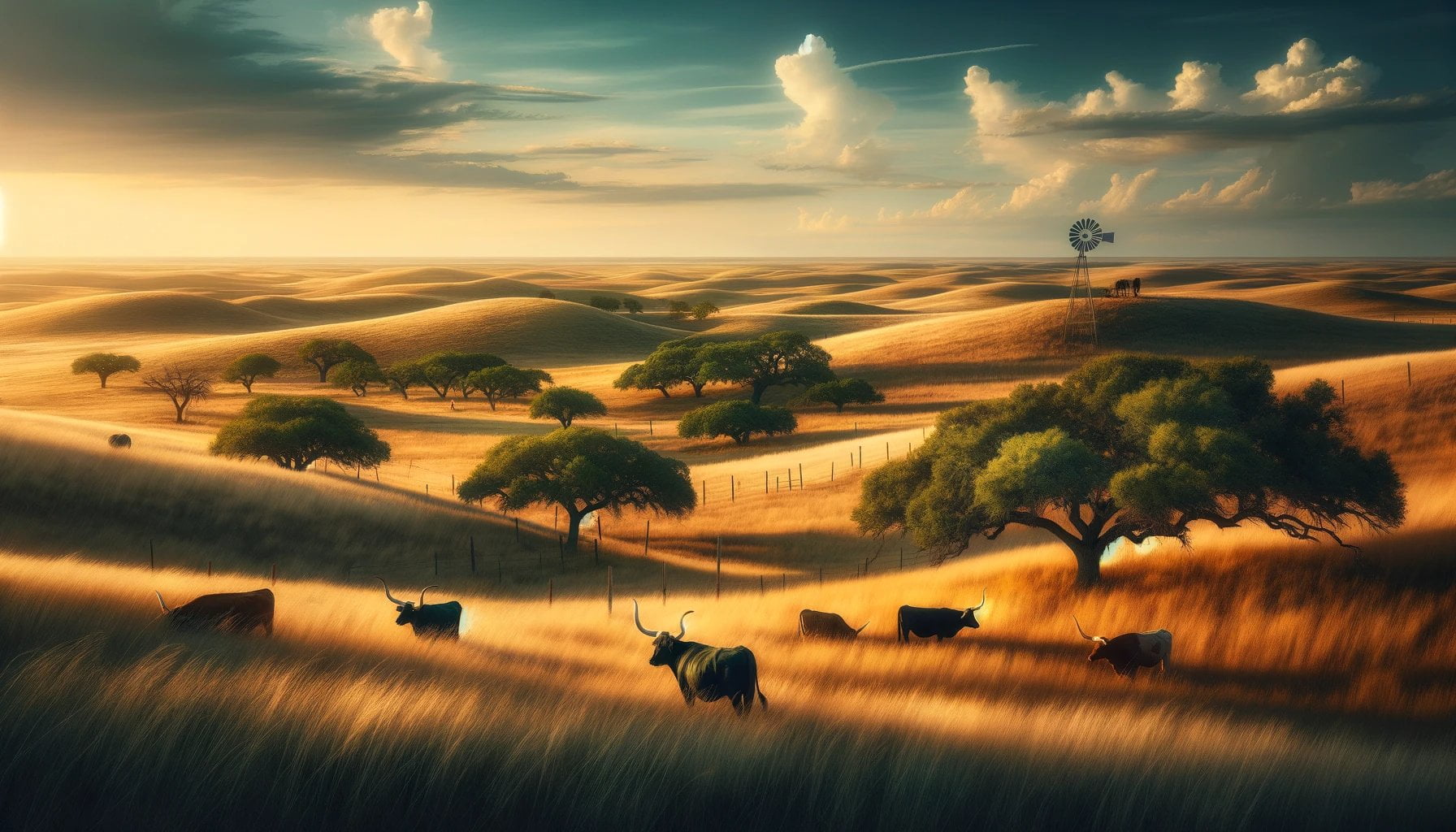
FAQ
Q1: How much rain does the North Central Plains of Texas receive annually?
A1: The North Central Plains of Texas receives about 30 inches of rain annually [^1].
Q2: What is the climate like in the North Central Plains region of Texas?
A2: The North Central Plains experiences hot summers and chilly winters [^1].
Q3: Are tornadoes and hailstorms common in the North Central Plains of Texas?
A3: Yes, the North Central Plains is prone to tornadoes and hailstorms [^1].
Q4: What is an interesting historical event that occurred in the North Central Plains?
A4: In 1979, Wichita Falls, a city in the North Central Plains, was hit by the worst tornado ever recorded in Texas [^1].
Q5: Were camels released in the plains of Texas?
A5: Yes, during the 1850s and 1860s, over 100 camels were released in the plains of Texas for use in wars against Indians [^1].
